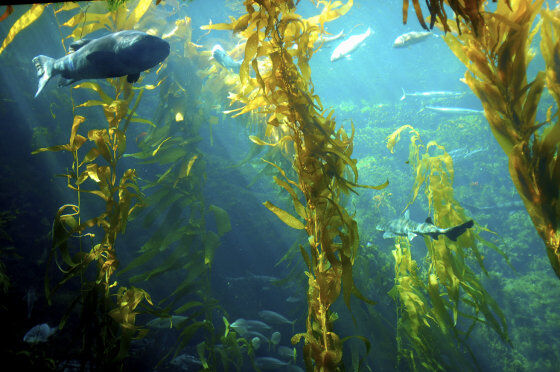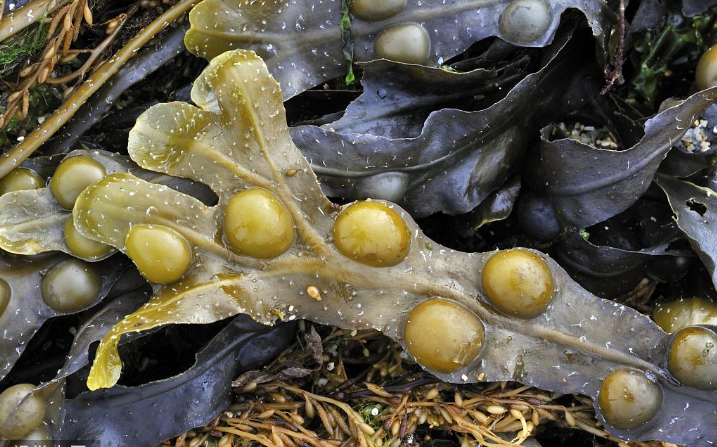Algae with Mysterious Powers - Fucus Vesiculosus【1】
Seaweeds are primary producers in the ocean, the largest biomass and renewable marine biological resources, through photosynthesis, carbon fixation and oxygen production to produce organic matter, supporting a huge chain of marine organisms, maintaining the balance of the marine ecosystem and even the global biosphere.
The ocean area accounts for 71% of the total area of the world, the ocean contains a wealth of biological resources and pharmaceutical resources, including seaweed resources are of great help to us, so far, seaweed in the food, drugs, feed, cosmetics, fertilizers, dressings and bio-energy, and other fields and within the scope of the huge economic value and development potential.

Seaweeds have the natural characteristics of adsorption and condensation of nutrients in seawater, coupled with the complex living environment, seaweeds contain a large number of active substances beneficial to the growth of plants, which is an excellent natural raw material for the manufacture of functional organic fertilizers; however, different kinds of seaweeds in different sea areas have different nutrient types and contents.
At present, the global production of seaweed fertilizer seaweed raw materials used in the main ascophyllum nodosum, great kombu, kelp, sargassum, Fucus Vesiculosus and seaweed and so on. Fucus Vermiculosus is rich in mineral and organic nutrients, and is the best raw material for processing seaweed fertilizer.
Fucus Vesiculosus belongs to the class of Brown Algae, and Fucus Vesiculosus is the most advanced order of Brown Algae. Algae perennial, flat or cylindrical, bifurcate branches or radial branches around the main stem. It grows apically, with several discoidal pigment bodies in each epidermal cell. No protein nuclei except in Murray's hornworms, no asexual reproduction in life history. With or without air sacs. The compound leaves are covered with a layer of mucus, which keeps seagrasses from dying when the tide recedes. There are only sporophytes without a separate gametophyte stage in the life history, and there are 350 species in 36 genera of 6 families, all of which are marine.

Mercurial algae, algae perennial, flat or cylindrical, bifurcate branches or radial branches around the main trunk. Algae body yellow-brown, soft leathery, drying black, generally 6-7cm high, individual up to 14.5cm, stalk sub-cylindrical, shorter, bifurcate branches on 2-8 times, the upper forked branch angle is narrower and unequal, and the upper part of the branch of the internode than the lower part of the long; lower bifurcate branches are more regular, forked branch angle is wider. When reproducing, the apices of the bifurcate branches expand, forming the receptacle, which is fusiform, thicker than the universal branches, and has a special stalk. By fall, the receptacle becomes subterete or clavate. Mature gonopods are oblong-angled; the surface has conspicuous nodular verruculose projections, which make the branches stout and misshapen.
Algal pith, composed of longitudinal rows of filamentous cells, and mucilaginous. Basal cementum conical discoid. The alga is doughnut-shaped, black, with a glaucous surface. After spreading, 6-7cm long, some can be as long as 14cm, the main stem is very short, there are forked branches, 2-8 times, sometimes visible branch tip has long angle-shaped germinal buttresses, the surface of the tumor-like protuberances, so that the branches become thick and deformed. Fixation apparatus conical disk-shaped. It is slightly fishy and salty.

Growing environment and distribution: marine, growing in the mid-tidal zone on the rocks, in the sheltered inner bay on the rocks with less wind and waves, the algal branches grow luxuriantly. It grows on the coast of Brittany, France, which is rich in marine life, and can be harvested at low tide. Most of the distribution in the tropical and subtropical oceans, part of the distribution of the frigid zone. In China it is found along the coasts of Liaoning and Shandong. The longest length can reach 300 meters, very hard, with smooth roots.
At present, the Fucus Vesiculosus has been widely used in food, medicine, fertilizer and daily chemical industry, etc., the next article we continue to understand the efficacy and application of Fucus Vesiculosus.



 Mobile: 86-13012553585 15610518510
Mobile: 86-13012553585 15610518510 Phone (Fax):86-53283197178
Phone (Fax):86-53283197178 E-mail: admin@bluealga.com
E-mail: admin@bluealga.com Add:No.918 Lingang 8 Road Huangdao District,Qingdao China 266400
Add:No.918 Lingang 8 Road Huangdao District,Qingdao China 266400

